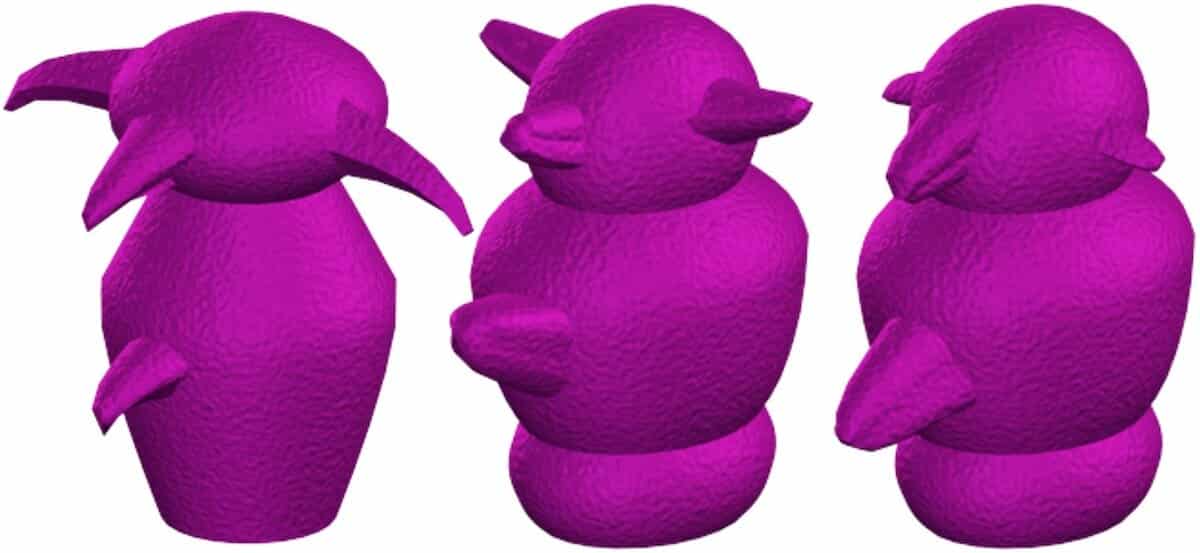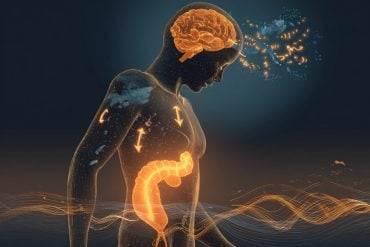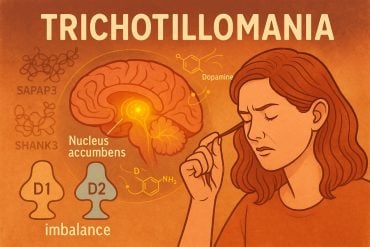Summary: Study demonstrates the importance of a specific type of connection between neurons and may also explain how ketamine shows promise in treating depression.
Source: University of Wisconsin-Madison
Rather than constantly repainting a new canvas with a picture of the surrounding world each time it takes in information, the human brain appears to build a working model supported by predictions constantly checked and rechecked against the sights and sounds it already expects.
Researchers from the University of Wisconsin–Madison have demonstrated the top-down nature of this world view by disrupting it with tiny doses of an anesthetic drug called ketamine. Their study reveals the importance of a specific type of connection between brain cells and may also explain ketamine’s promise as a treatment for depression.
A bottom-up understanding of perception has been prevalent for decades and says that sensory information moves from lower-order parts of the brain to “higher” parts that use it to perform executive functions like focusing and planning. But the top-down approach has roots in the 19th century. Now called predictive coding, the idea is that the frontal lobe of the brain makes predictions about what will happen next based on learned associations.
“You come to expect that if you hear a bark, you will see a dog,” says Sounak Mohanta, a graduate student in the lab of UW–Madison psychology and neuroscience professor Yuri Saalmann. “We used those sorts of associations to show how predictions affect behavior.”
For their study, published recently in the Journal of Neuroscience, the researchers taught 32 volunteers associations that were completely new to them by playing them a three-syllable nonsense word and following it with a picture from an assortment of unique animal-like shapes called greebles.
Through feedback, the volunteers learned which sound was paired with which picture. The researchers then tested the volunteers by playing them a sound, showing them a picture, and asking the volunteers to say whether the pair matched. The researchers also mapped the patterns in volunteers’ brains specific to correct sound-shape pairs by recording electrical activity as the sounds and shapes appeared.
Once three of these associations were introduced, the predictive qualities of the sounds were skewed in the test subjects’ minds by making a paired greeble follow its matched sound 85 percent of the time, 50 percent of the time or 33 percent of the time.
“The stronger our listeners understood a sound was predictive of a certain shape, the quicker they could tell us if the shape we showed them matched the sound,” Saalmann says. “Their reaction times for the 50-percent-predictive sounds were much slower, and slower still for the least predictive sounds.”
After hearing the highly predictive sound, activity in the subjects’ frontal lobes would increase, sending a signal down to the sensory centers in the back of the brain and activating the brain cells, called neurons, that represent the anticipated shape. Then, when the shape appeared, those neurons would get even more active and would elicit speedier responses from the viewer.
Unless the study subjects were administered ketamine.
“This drug, ketamine, blocked that whole set of processes, every one of those steps,” Mohanta says.
Neurons communicate by passing chemical signals across tiny gaps between neighboring cells. Each type of signal has a transmitter and receptor. Ketamine interferes with one specific communication channel by blocking NDMA receptors, which are common on the neurons along the pathways from the frontal lobe to sensory centers. This blocks the signal.

After a tiny dose of ketamine—set by former UW–Madison anesthesiologist Rob Sanders, now at the University of Sydney in Australia—the highly predictive sound caused different, much noisier and disorganized activity in the frontal lobe. The pathway through the brain that normally prepared sensory centers for the anticipated shape instead stayed relatively quiet. Reaction times for all shapes stretched out, making them more like reaction times for the least-predictive sounds.
“The priming signal is lost. The brain no longer benefits from the top-down predictions, and errors happen,” says Saalmann, whose work is supported by the National Institutes of Health. “This experiment Sounak designed means whatever your view on how perception comes together, you need to include the predictions in this feedback process as an important part of brain function.”
Poor predictions are a feature of disorders including depression and schizophrenia, in which they can erroneously convince someone the worst is bound to happen or lead to hallucinations. Ketamine has been shown to relieve depression-like symptoms in animal studies, and is being used for clinical studies of depression.
“Blocking the negative predictions that are prominent in depressed patients could be how ketamine helps,” Saalmann says.
About this depression research news
Author: Chris Barncard
Source: University of Wisconsin-Madison
Contact: Chris Barncard – University of Wisconsin-Madison
Image: The image is credited to Scott Yu, I. Gauthier, I., M.J. Tarr
Original Research: Closed access.
“Predictive Feedback, Early Sensory Representations, and Fast Responses to Predicted Stimuli Depend on NMDA Receptors” bySounak Mohanta et al . Journal of Neuroscience
Abstract
Predictive Feedback, Early Sensory Representations, and Fast Responses to Predicted Stimuli Depend on NMDA Receptors
Learned associations between stimuli allow us to model the world and make predictions, crucial for efficient behavior (e.g., hearing a siren, we expect to see an ambulance and quickly make way). While there are theoretical and computational frameworks for prediction, the circuit and receptor-level mechanisms are unclear.
Using high-density EEG, Bayesian modeling, and machine learning, we show that inferred “causal” relationships between stimuli and frontal alpha activity account for reaction times (a proxy for predictions) on a trial-by-trial basis in an audiovisual delayed match-to-sample task which elicited predictions. Predictive β feedback activated sensory representations in advance of predicted stimuli.
Low-dose ketamine, an NMDAR blocker, but not the control drug dexmedetomidine, perturbed behavioral indices of predictions, their representation in higher-order cortex, feedback to posterior cortex, and pre-activation of sensory templates in higher-order sensory cortex.
This study suggests that predictions depend on alpha activity in higher-order cortex, β feedback, and NMDARs, and ketamine blocks access to learned predictive information.
SIGNIFICANCE STATEMENT
We learn the statistical regularities around us, creating associations between sensory stimuli. These associations can be exploited by generating predictions, which enable fast and efficient behavior. When predictions are perturbed, it can negatively influence perception and even contribute to psychiatric disorders, such as schizophrenia.
Here we show that the frontal lobe generates predictions and sends them to posterior brain areas, to activate representations of predicted sensory stimuli before their appearance. Oscillations in neural activity (α and β waves) are vital for these predictive mechanisms. The drug ketamine blocks predictions and the underlying mechanisms.
This suggests that the generation of predictions in the frontal lobe, and the feedback pre-activating sensory representations in advance of stimuli, depend on NMDARs.







